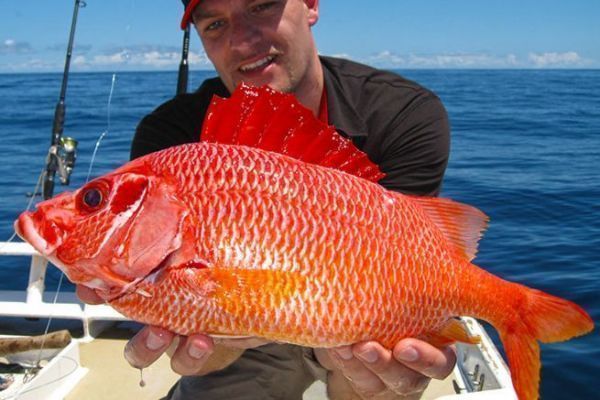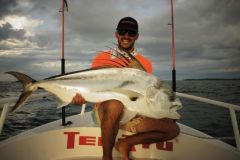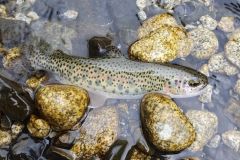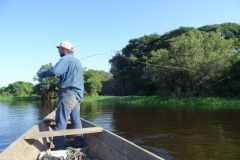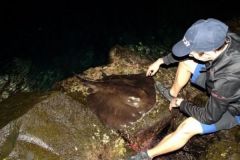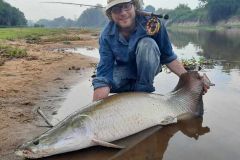Scientific name
Sargocentron spiniferum (Forsskål, 1775)
Morphology
The giant squirrelfish features a bright red body, creating a striking contrast with the edges of its silver scales. Multiple silver arches can be seen on the massive red body. Its first dorsal fin is imposing and colored dark red. It is separated from the second dorsal fin.
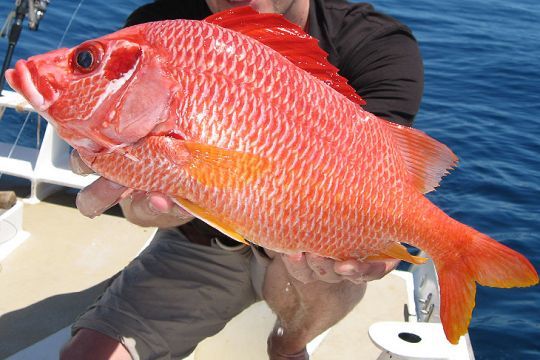
Its other fins are orange-red. The caudal fin is deeply indented. Large, round, black eyes with a red rim accentuate the robust character of this fish. Its back is humped and its mouth has thick lips.
Fishing spots
The giant squirrelfish is found over a wide area of the Indian and Pacific Oceans. It can be found in the Red Sea and as far as Hawaii, as well as from Japan to southern Australia. It prefers to live on coral reefs and drop-offs. This nocturnal species remains immobile in its shelters during the day. Juveniles swim in shallow coastal waters. Adults are fished in deeper water at depths of up to 120 m. They produce muffled growling sounds to warn of danger. After making this sound, they hide in their crevices.
Giant squirrelfish fishing techniques
Its diet consists mainly of small fish, shrimps and crabs. It feeds at night. Bites often take place in the evening at dusk.
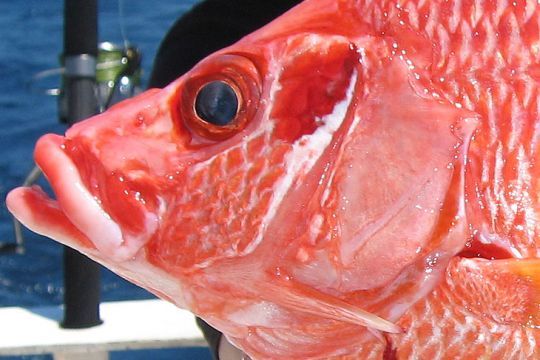
Longline fishing is the most effective way of targeting this species near rocky drop-offs or coral reefs.
Reproduction
The giant squirrelfish fertilizes externally, expelling its eggs in open water. Larvae are pelagic and follow ocean currents.
Size and weight
- Legal minimum catch size: none
- Size at sexual maturity: unknown
- Average size: 35 cm
- Maximum height/weight: 51 cm âeuros2.5 kg (7 years)
- World record: 2.55 kg (Ke?hole Point, Hawaii, USA, 03/26/1995)
Good to know
It has a variety of names depending on where it is caught: soldat armé, marignan sabre, barraque, commissaire, cardinal lancette... Beware: the spine at the pre-opercule is venomous.

 /
/ 